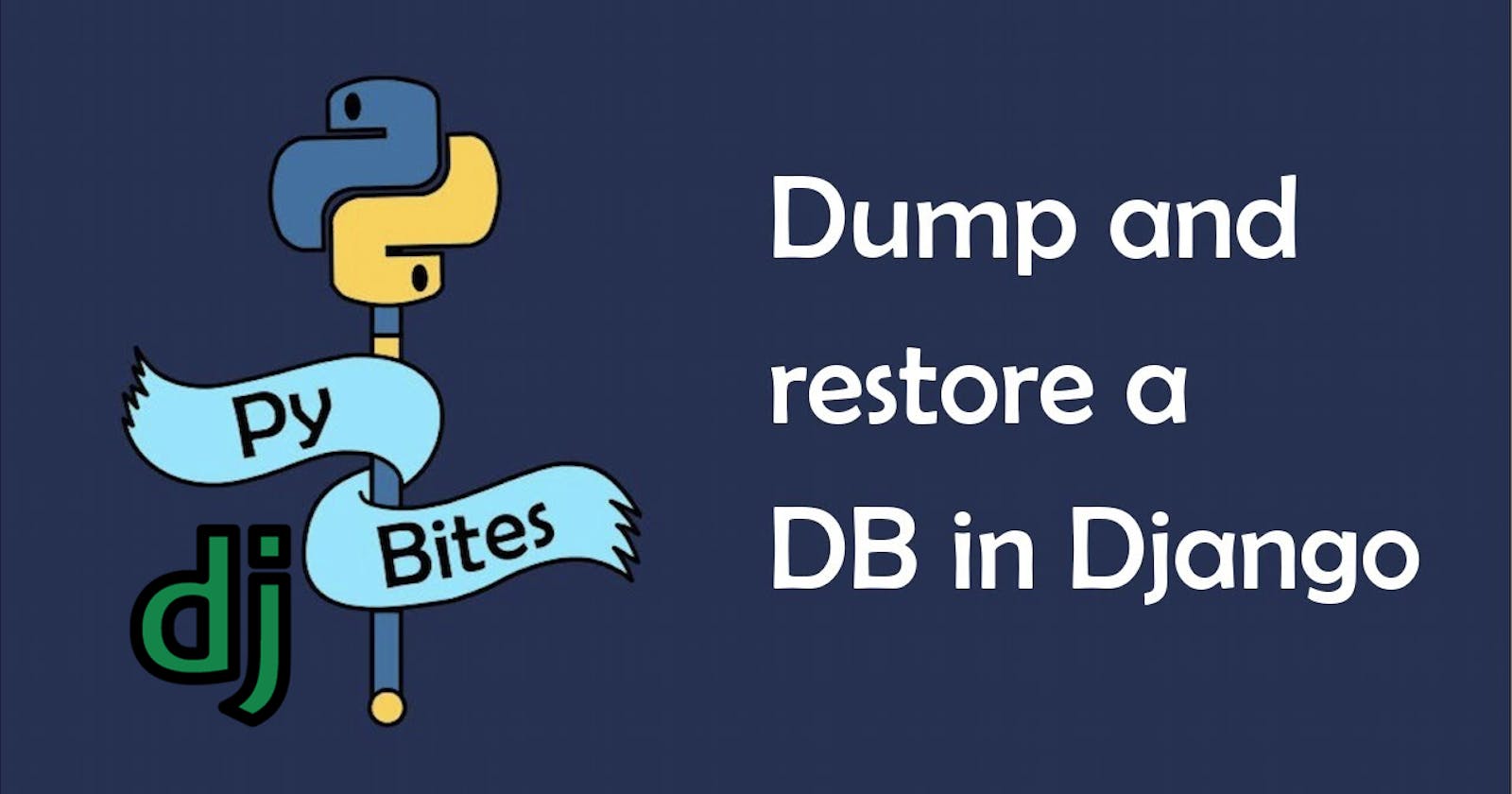Django's dumpdata and loaddata Commands: Backing up and Restoring Your Data
Django provides powerful management commands, dump data and loaddata, for managing your application's data. These commands enable you to back up and restore data efficiently. In this article, we'll explore the usage of these commands for data backup and restoration.
Backup Data with dump data
dumpdata is a Django management command that allows you to export model instances or the entire database.
Basic Database Dump
You can use dumpdata to back up your entire database by running the following command, which creates a file called db.json containing your database content:
python manage.py dumpdata > db.json
Backup Specific Apps
If you want to back up data from a specific app, such as the Django admin app, use the following command:
python manage.py dumpdata admin > admin.json
Backup Specific Tables
To back up data from a specific table, provide the app name and table name:
python manage.py dumpdata admin.logentry > logentry.json
You can also back up data from the auth.user table using a similar command:
python manage.py dumpdata auth.user > user.json
Exclude Data with --exclude
You can use the --exclude option to specify apps or tables that should not be included in the backup. For example, to exclude the auth.permission table, use the following command:
python manage.py dumpdata --exclude auth.permission > db.json
Improve Readability with --indent
By default, dumpdata outputs data in a single line, which can be challenging to read. You can enhance readability by using the --indent option to pretty-print the output with a specified number of indentation spaces. For example:
python manage.py dumpdata auth.user --indent 2 > user.json
Customize Output Format with --format
Django's dumpdata supports different serialization formats, including JSON (default), XML, and YAML. You can specify the format using the --format option. For example, to output data in XML format:
python manage.py dumpdata auth.user --indent 2 --format xml > user.xml
Restore Data with loaddata
The loaddata command is used to restore data from fixtures (database dumps) into the database.
Basic Data Restoration
To load data from a fixture, you can use the loaddata command, specifying the filename of the fixture, such as user.json:
python manage.py loaddata user.json
Restoring a Fresh Database
When restoring a database backup made using dumpdata into a fresh database (e.g., in another Django project), you may encounter IntegrityError issues. To prevent this, back up the database by excluding the content types and auth.permissions tables:
python manage.py dumpdata --exclude auth.permission --exclude contenttypes > db.json
Now, you can use the loaddata command to populate the fresh database:
python manage.py loaddata db.json
These Django management commands, dump data and loaddata, are indispensable for managing your application's data, enabling you to effortlessly back up and restore data, facilitating data migration, and database management.

